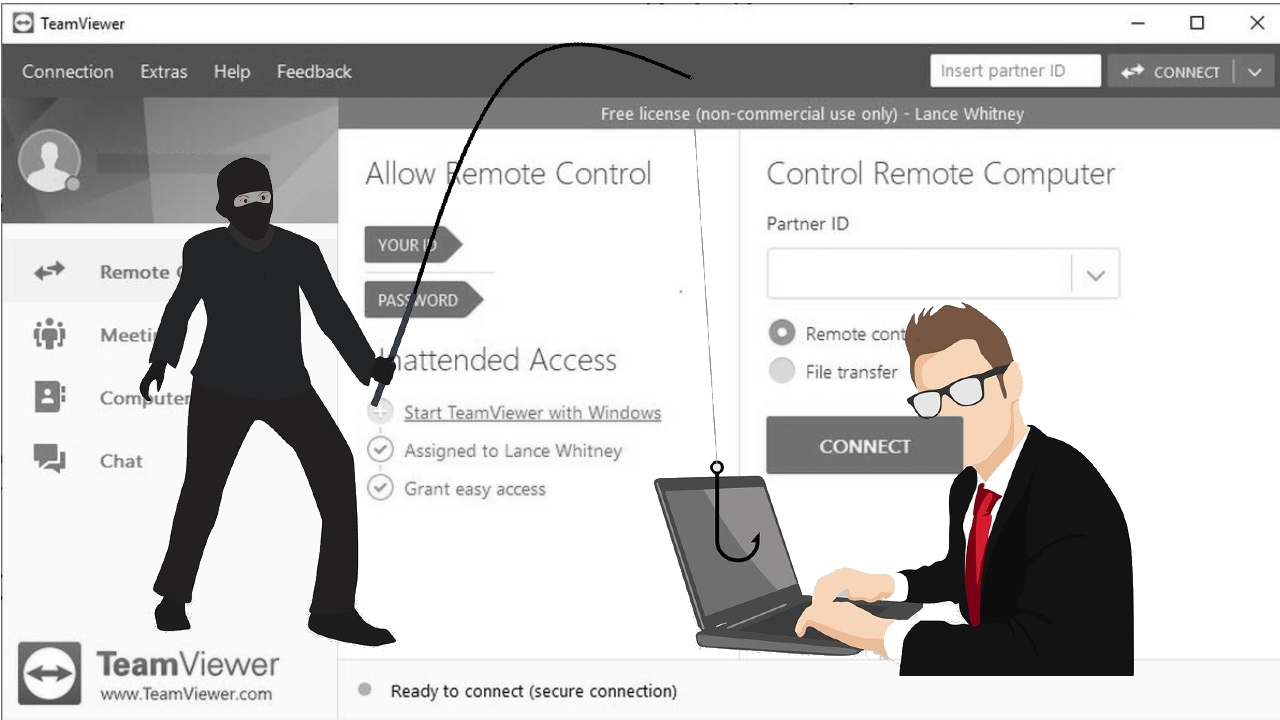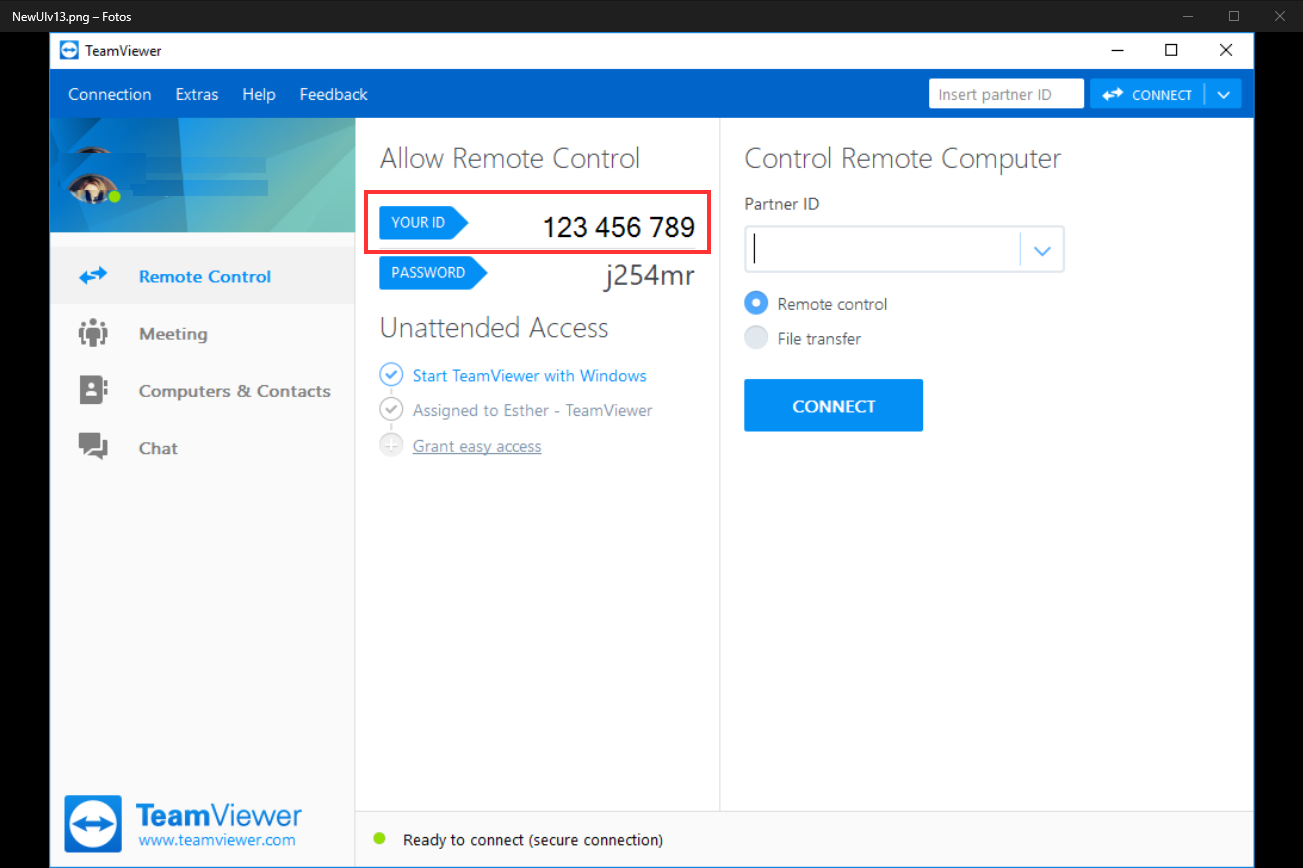Remote Desktop Applications (RDP) such as TeamViewer and AnyDesk, serve a critical purpose. They allow you to access your computer remotely. As it works out, you can operate your home computer while at work or out exploring the world.
I have been using TeamViewer. I have it installed on both my PC at home and a laptop which I bring virtually everywhere with me like my shadow.
The PC back home is always powered on and connected to the internet. That way, whenever I want to access the PC while away from home. I take out my laptop, create a hotspot on my smartphone, and few clicks and taps, I have the home PC screen available live on my laptop.
I can then schedule my downloads, and if the internal hard disk is full, I can transfer the files to my external drive. Well, that and many more functions, which don’t need mentioning here. The bottom line is, I can swear to how much RDP apps have made my life smoother.
The headaches of using RDP
The biggest headache I faced with using TeamViewer was that the computer I needed to access remotely had to be logged in the user account.
By default, Windows logs you out of your user account after about 5 minutes of inactivity, give it another 15 minutes, the PC goes to sleep. After 30 minutes, it hibernates. At that point, the PC is inaccessible via the RDP, unless you have someone physically present to turn it back on again.
Since during day time, there is nobody at my home to turn on the PC. I had to find some workarounds that problems. The solution is detailed, and I would rather you read it from this link.
The Dangers of TeamViewer and any other RDP out there
‘Not to name names,’ but I recently had problems with my cable TV services. They have an established reputation for lousy customer service, with an intense concentration of impunity given there are two service providers within the market niche I am subscribed to.
Long story short, the landline connection to their customer care number seemed to have been cut by an earthquake back in the 19th century, and no one bothered to get it reconnected. Their calls never go through.
So I turned to Google Search and ran a search for a possible alternative customer care number. Yes, I thought they have a new one, and they never bothered to update the ‘Contact Us’ section of their website, which, by the way, has never been updated for almost a decade now.
Online Fraudster capitalizing on Poor Customer Care
Google did serve me with a SERP with what appeared as a probable new customer care number for the customer service for the cable company. I dialed the number, and the ‘customer service representative’ made some shocking requests.
She had a soothing voice, almost arousing if you know what I mean, luckily I was thinking with my head, not with my ‘head.’
Sir, I feel your frustration, and I would like to let you know that we (the company’s name) take your concerns seriously. To help you manage the issue, could you login to your user account so we can view your account details?
The ‘customer care agent’ asked me to install RDP like TeamViewer or AnyDesk to walk me through the process. That raised the red flag for me, and at that point, I knew she might be leading me on more than one front.
I played along, and she asked for my User ID and Password to connect remotely to my system. At that point, I declined, and she immediately hung up.
A simple search online will tell you hackers are taking advantage of the facts; some companies have poor customer service. They then create fake websites complete with phone numbers and email addresses. When a disgruntled customer comes across such a website, and sometimes out of frustration, they readily comply with the hackers’ requests.
As it turns out, these hackers dupe you into installing RDP applications like TeamViewer and AnyDesk. Then ask you to grant them control of your system. At which point, they can then proceed to steal your account credentials from the user account passwords saved on your browser.
Especially if you are using browsers such as Mozilla Firefox, which discloses your username and password at the click of a button.
— Felix Omondi (@flexxmosh) November 18, 2019
In Summary…
Though RDP apps like TeamViewer and the rest are safe and secure to use, that security goes as far as the integrity of the person you give access to your computer.
If you have a black hat hacker on the other end, perhaps after they duped you into thinking they are customer care or something. They can use the access granted to your computer to install malware, steal your account passwords, among other criminal activities. In a nutshell, only share your RDP application access to people you trust.
Why hand-me-down Mac Users should be Cautious about macOS Catalina Upgrades




